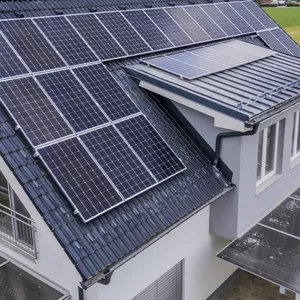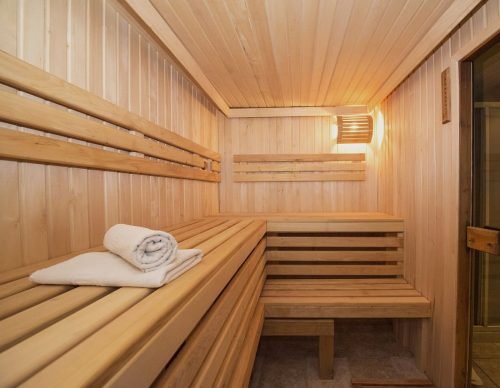It’s amazing to think that something as omnipresent and integral to the global economy as shipping containers didn’t even exist a few decades ago. And then to consider that, thanks to the ingenuity of forward-thinking individuals, we now see containers in an entirely new light—as construction materials.
Containers are special, but they’re not flawless. With years of experience under our belts, we can appreciate many of their great benefits while still acknowledging where they might fall short at times. Fortunately, we also have insights into how to overcome many of these perceived drawbacks.
In this article, our intention is to highlight the incredible surge in container home construction around the world. We’ll start by discussing the origins of containers: first as a method of transporting goods and more recently, as a means of construction. Then, we’ll delve into some of the pros and cons of using containers for your next building project.
Container housing has burst onto the scene as a new form of architecture. These repurposed containers are an attractive option for all sorts of projects, from affordable homes that can be placed almost anywhere to unique, modern spaces for commercial or multifamily use.
But to get a complete idea of whether this construction style is right for you, we’ve penned this article with a comprehensive view of what you can truly expect from these metal boxes.
Whether we convince you to embrace containers or not, we’ll consider this article a success if you come away with a better understanding of the whole landscape and can make the best, most informed decision for yourself.
History of Shipping Containers
The shipping container, like most new products, was created to solve a problem: how to swiftly and securely transport goods both by land and sea more efficiently.
The crucial innovation of containers is that they are:
- Large enough to hold several thousand cubic feet of goods.
- Small enough to fit onto a truck and drive on regular roads.
- Strong enough to withstand a often treacherous journey at sea.
- Light enough to be moved by cranes, forklifts, and other material handling equipment.
- Uniform enough that any truck or ship can carry any container.
- Flexible enough to be used for dry goods, refrigerated products, bulk liquids, etc.
Thanks to the work of individuals like Malcolm McLean, in just a few short decades, the world has been entirely transformed by the economic transportation of goods from distant countries. These standardized steel transport containers were the essential invention that made it all possible.
For more insights into the fascinating background history of these cargo boxes, you can read our article on the incredible history of shipping containers.
What Are Container Homes?
Contrary to what some might think, the category of homes encompassed by container construction is quite vast. Container architecture has nearly become its own field, with architects worldwide showcasing how innovative they can be with the same basic building blocks.
There are single-unit container homes, tiny container homes on wheels, and massive container homes with adjacent walls removed for larger interior spaces. The student apartments at Mill Junction in Johannesburg, South Africa, utilize containers placed atop old grain silos.
There’s a whole spectrum of hybrid container buildings that combine containers with traditional construction inside and traditional buildings with containers jutting out of them. There are container buildings with exterior cladding and interior walls that make it nearly impossible to tell if there’s a container beneath unless you’ve been watching during construction.
In summary, containers don’t neatly fit into traditional categories of construction, as they can be transformed for various purposes with effort. So, instead of defining container buildings by size, appearance, or target audience, we describe them as structures erected in part with containers.
It’s a common misconception to assume that container buildings are limited to a single vision. This limited understanding confuses different audiences. In other words, choosing to build with containers isn’t the same as opting for a tiny house or a metal-clad house. These choices are not mutually exclusive.
We emphasize this to prevent people from dismissing options based on misconceptions. We expand ‘container housing’ to accommodate innovation. In the next section, we present pros and cons of this type of construction. Consider your needs as you compare against these factors.
Benefits of Container Homes: A Comprehensive View
Container homes offer a range of exceptional qualities, although it’s crucial to understand that they’re not suitable for everyone or every situation. Below, we’ll highlight some specific qualities that make containers advantageous. We’ll also address challenges that can arise when opting for this construction method.
It’s essential to consider that these benefits may vary in relevance depending on your individual needs and preferences. Therefore, it’s advisable to compare your individual preferences against the advantages we mention below and determine how they influence your choice.
Affordability: A Financial Perspective
While container homes don’t always turn out cheaper than traditional constructions, many people find that building with containers can save them money. This is due to various factors, such as design options, total size, and the possibility of DIY involvement.
Containers present advantages over conventional construction methods, and if leveraged properly, they can yield financial benefits. The key lies in accepting and working with the unique characteristics of containers rather than against them.
By delving further into the design and construction decisions that contribute to the affordability of container homes, you can learn more in “The Truth about the Affordability of Container Homes.” However, beyond financial savings, it’s essential to approach construction with realistic expectations.
Sustainability: An Eco-Friendly Option
Container construction exemplifies the concept of “reuse” of materials or products. It gives a second useful life to used containers that are no longer suitable for cargo transport.
Furthermore, when combined with concepts like minimalism and tiny houses, containers can contribute to reducing the consumption of materials and natural resources.
For more detailed information on sustainability in container construction, we recommend reading “Enhance Your Sustainability with Containers.”
Robustness: Durable Construction
Since containers are made from steel and designed to endure extended journeys across the ocean, it’s evident that they possess an extremely robust structure. This weather resistance, capacity to bear heavy loads, and longevity translate to significant benefits when used in construction.
Whether you’re interested in withstanding natural forces, protecting your family and belongings, or simply creating a durable dwelling for future generations, container construction offers compelling advantages.
If you’d like to delve further into how the strength, stability, and durability of containers can benefit you, we recommend reading “Container Homes Are Strong and Resilient.”
Originality: Unique Designs
Although empty containers have standardized dimensions, what makes them unique is what can be achieved with them. Just like a blank canvas transformed with paint, containers offer a platform for creativity in design.
Ironically, a utilitarian object meant to be uniform can give rise to exceptionally unique homes and buildings. When considering all the ways they can be modified, combined, and utilized, it’s clear that the possibilities are boundless.
To better grasp the opportunities for distinctive design that containers offer, we recommend reading “Style and Design to Make Your Container Home Wonderfully Unique.”
Flexibility: Adaptable to Various Needs
The inherent flexibility of containers is another of their noteworthy advantages. Thanks to their ability to be transported by sea, road, and rail, containers offer versatility in terms of location, movement, and use.
Want your container building to be fabricated in a factory and shipped ready to assemble? It’s possible! Prefer to build it yourself in a remote location? That’s possible too! Containers accommodate various needs and scenarios, making them a valuable option for those seeking flexible architectural solutions.
Potential Challenges: Factors to Consider
Despite the many advantages that container homes offer, it’s also crucial to understand the potential challenges associated with this type of construction. It’s vital to address these challenges realistically and consider how they will impact your overall experience.
One of the most prominent challenges is the need for proper insulation. Since containers are primarily designed for cargo and transportation, their thermal and acoustic insulation can be insufficient for habitation. However, this challenge is manageable with appropriate insulation approaches.
Another challenge is the process of obtaining building permits. Depending on local regulations and building codes, you might need to navigate additional hurdles to secure the necessary permits for container homes.
It’s also essential to consider careful planning and design to ensure that the resulting space is functional and comfortable. Containers can have limitations in terms of size and layout, requiring meticulous planning to optimize the available space.
Conclusion: An Option for Architectural Innovators
Container homes are an intriguing option for those seeking a unique perspective on home construction. They offer a unique blend of affordability, sustainability, robustness, originality, and flexibility. However, it’s also vital to consider the challenges associated with this approach.
If you’re willing to embrace architectural innovation, tackle challenges creatively, and collaborate with design and construction experts, container homes could be a rewarding choice. At the end of the day, it’s about finding alignment between your goals, needs, and the advantages this architectural option can provide.
In “The Future of Container Construction: A Look Ahead,” we explore emerging trends in container construction and how this approach might evolve in the future. This perspective can provide you with a more complete view of how container homes could shape architecture in the years to come.
Ultimately, container homes are more than a passing trend; they represent an ongoing exploration of what’s possible in the world of architecture and construction. With the right blend of vision, planning, and execution, container homes can be much more than an architectural curiosity: they can be the realization of your vision for a unique and exceptional home.

«Tu casa con contenedores» es la única guía paso a paso que existe para construir tu propia casa con containers desde cero. No importa si no tienes conocimientos sobre construcción, si pensar en ello te da dolor de cabeza, si eres constructor o trabajas en una oficina. La guía está escrita para que cualquiera pueda entenderlo. MAS INFORMACIÓN CLIC AQUÍ Construye Tu Casa con Contenedores Paso a PasoHágalo Usted Mismo
 MAS INFORMACIÓN CLIC AQUÍ Construye Tu Casa con Contenedores Paso a Paso
MAS INFORMACIÓN CLIC AQUÍ Construye Tu Casa con Contenedores Paso a Paso 



